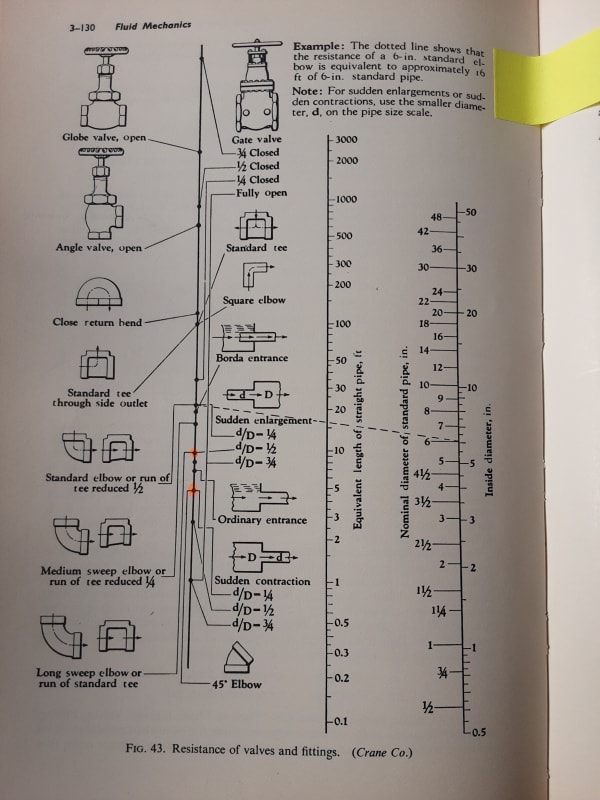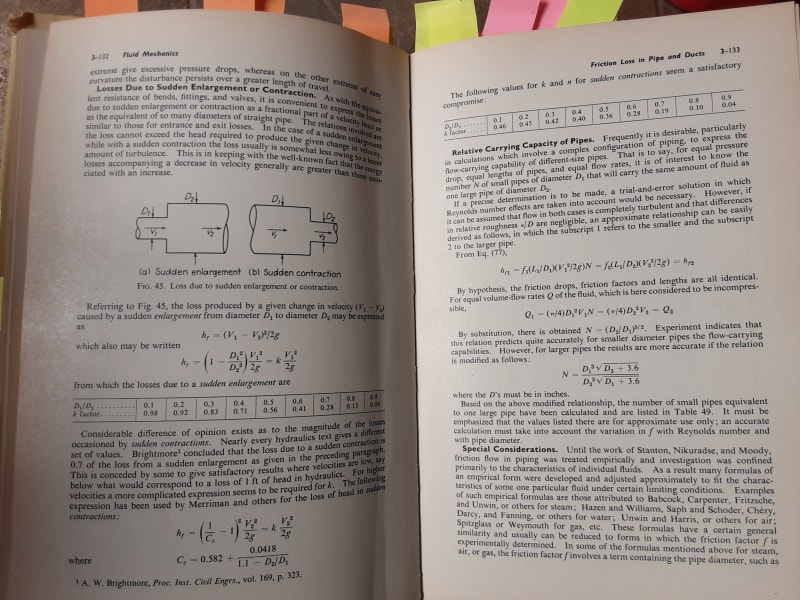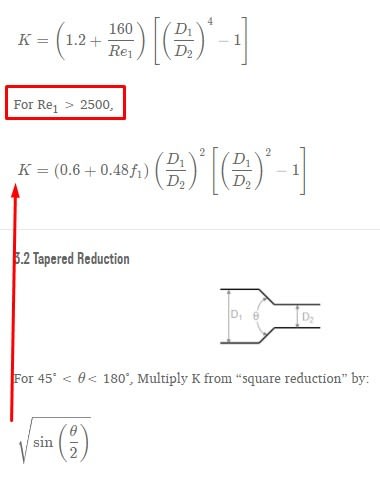Iomcube
Chemical
- Dec 11, 2015
- 187
Crane TP-410M while calculating K values for reducer / expander only uses physical geometry of said fitting. The formulas are here:
However, in all other fittings (like valves, turns) K value is dependent on Reynolds (or Darcy frictional factor). This latter approach appeals to common sense & such formulas for reducers/expanders I have seen here:
or
or
(last & 2nd-last tables)
Can anyone explain this independency of reducer K-factors on Reynolds number as adopted by Crane??
However, in all other fittings (like valves, turns) K value is dependent on Reynolds (or Darcy frictional factor). This latter approach appeals to common sense & such formulas for reducers/expanders I have seen here:
or
or
(last & 2nd-last tables)
Can anyone explain this independency of reducer K-factors on Reynolds number as adopted by Crane??





